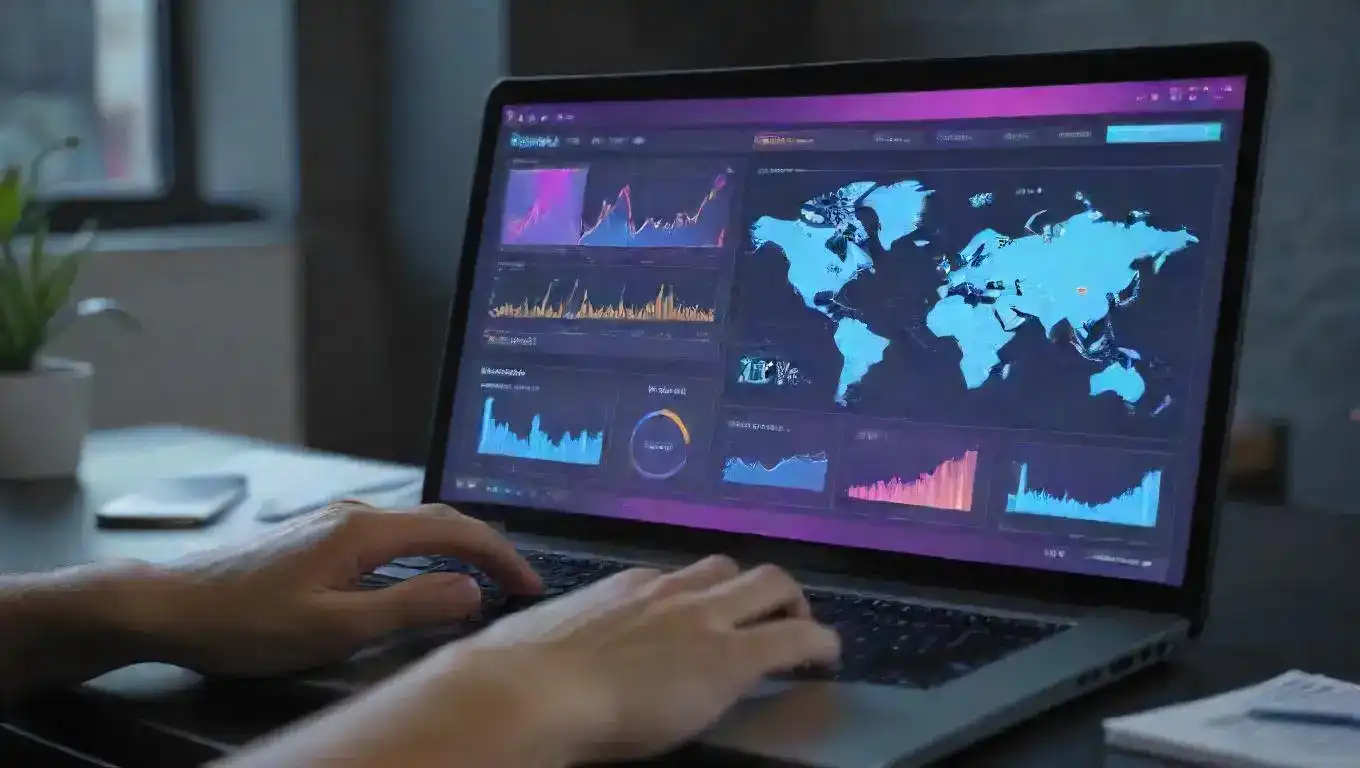Quantitative Easing: Role and Effects
Emily Willis

Photo: Quantitative Easing: Role and Effects
Quantitative Easing (QE) has become a recurring term in economic discussions, particularly after major financial crises. While it might sound like complex financial jargon, understanding its core principles, role, and effects is crucial for anyone seeking to grasp the dynamics of modern economies. This article aims to demystify Quantitative Easing, explaining its purpose, how it operates, and its far-reaching implications for individuals, businesses, and the global financial landscape.
What is Quantitative Easing (QE)?
At its heart, Quantitative Easing (QE) is an unconventional monetary policy tool used by central banks to stimulate an economy when traditional monetary policy tools, such as lowering short-term interest rates to near zero, become ineffective. Think of it as a powerful economic lever pulled when the usual nudges aren't enough to get the economy moving.
Unlike conventional monetary policy, which primarily manipulates short-term interest rates to influence borrowing and spending, QE involves a central bank directly injecting money into the financial system. It's an expansionary policy designed to increase the money supply and encourage lending and investment.
Central Banks and Their Role in QE
Globally, central banks are independent institutions responsible for maintaining financial stability and managing the economy's money supply. Institutions like the U.S. Federal Reserve, the European Central Bank (ECB), and the Bank of Japan (BoJ) are prime examples. When an economy faces severe downturns, such as a deep recession or a financial crisis, these central banks may resort to QE to prevent a complete collapse and foster recovery.
The Role of Quantitative Easing: Why Central Banks Use It
Central banks deploy Quantitative Easing with several key objectives in mind, primarily aimed at boosting economic activity when conventional methods fall short.
- Stimulating Economic Growth: The overarching goal of QE is to inject liquidity into the financial system, encouraging banks to lend more and businesses to invest and expand. This increased spending and investment are critical for job creation and overall economic growth.
- Lowering Long-Term Interest Rates: While central banks directly control short-term rates, QE's primary impact is on long-term rates. By purchasing large quantities of government bonds and other assets, the central bank increases demand for these assets, driving up their prices and, consequently, pushing down their yields (which are inversely related to interest rates). Lower long-term rates make it cheaper for businesses to borrow for expansion and for individuals to get mortgages or car loans.
- Increasing Liquidity in the Financial System: During times of crisis, banks might become hesitant to lend to each other or to businesses, leading to a "credit crunch." QE aims to flood the banking system with reserves, ensuring that banks have ample funds available for lending, thereby improving liquidity.
- Combating Deflation: Deflation, a sustained decrease in the general price level of goods and services, can be more damaging than inflation in the long run. It discourages spending and investment as consumers and businesses delay purchases, expecting prices to fall further. QE, by increasing the money supply and encouraging spending, is a powerful tool to counteract deflationary pressures.
How Quantitative Easing Works: A Step-by-Step Guide
Understanding the mechanics of Quantitative Easing is crucial to appreciating its potential impact. It's not about printing physical money and handing it out; rather, it's a sophisticated process involving financial markets.
- Asset Purchases: The central bank initiates QE by purchasing large quantities of assets from commercial banks and other financial institutions. The most common assets bought are government bonds (also known as treasury bonds) and, in some cases, other securities like mortgage-backed securities (MBS). These purchases are funded by creating new central bank reserves, effectively "digital money."
- Impact on Money Supply: When the central bank buys these assets, it credits the accounts of the selling banks with new reserves. These reserves are essentially new money in the banking system. This directly increases the overall money supply within the economy.
- Impact on Bond Prices and Yields: The increased demand for government bonds from the central bank drives up their prices. Since bond prices and yields move inversely, this action simultaneously pushes down bond yields, which serve as benchmarks for various other long-term interest rates in the economy. Lower yields on government bonds encourage investors to seek higher returns elsewhere, potentially in corporate bonds or stocks, further stimulating economic activity.
Effects of Quantitative Easing
The implementation of Quantitative Easing has a wide array of effects, some intended and positive, others carrying potential risks and negative consequences.
Positive Effects of QE
- Economic Recovery and Job Creation: By lowering borrowing costs and increasing liquidity, QE aims to stimulate investment and spending. Businesses find it cheaper to expand, leading to increased production and, crucially, job creation. This was evident in the U.S. after the 2008 financial crisis, where QE programs were credited with helping the economy recover.
- Increased Asset Prices: With lower bond yields, investors often seek higher returns in other markets. This can lead to increased demand for stocks and real estate, driving up asset prices. While beneficial for those who own these assets, it can also contribute to wealth inequality.
- Lower Borrowing Costs for Businesses and Consumers: The decline in long-term interest rates translates into cheaper loans for both businesses and consumers. Companies can borrow more affordably for capital investments, and individuals can access cheaper mortgages or car loans, boosting spending.
- Prevention of Deflation: By expanding the money supply and encouraging economic activity, QE directly combats the threat of deflation, helping to maintain stable prices and prevent a downward spiral in economic activity.
Latest ✨
View AllUnlock explosive growth! Discover 7 powerful growth hacks to fuel your startup's success, acquire users rapidly, and thrive with limited resources.
Emily Willis
Unlock your potential with Competency-Based Learning! Master real-world skills at your own pace, moving beyond traditional education.
Emily Willis
top digital marketing trends for 2024, including the rise of AI, the importance of user experience, video marketing dominance, influencer marketing, privacy and data security, sustainability and ethical marketing, and emerging trends like AR/VR, metaverse marketing, blockchain, and NFTs. Specific strategies are provided for leveraging AI for personalized customer experiences, enhancing user experience for mobile users, creating engaging video content, building authentic influencer partnerships, prioritizing data privacy and security, integrating sustainability and ethical practices.
Emily Willis
the rise of eSports as a global phenomenon, highlighting its evolution from niche to mainstream, the impact of pioneering games and genres, the rise of professionalism, global appeal and audience engagement, cultural impact and integration, and bridging virtual sports and physical sports.
Emily Willis
Business
View All
June 18, 2025
Assurance Auto Pas Chère : Le Guide Ultime (2025)Découvrez comment trouver une assurance auto pas chère sans sacrifier la qualité. Notre guide 2025 vous offre astuces, comparatifs et conseils d'experts pour économiser intelligemment.
Emily Willis

June 8, 2025
Financial Planning for Small BusinessUnlock small business success! Learn essential financial planning strategies to manage cash flow, drive growth, and navigate challenges. Your roadmap to thrivin...
Emily Willis

June 9, 2025
Digital Transformation: What's Next?What's next for digital transformation? Explore its evolving landscape, key drivers, emerging technologies, and strategies for future business success.
Emily Willis
Economy
View AllNavigating government debt: Explore its complexities, challenges, and actionable solutions for a healthy economy and a prosperous future.
Read MoreGlobal inequality refers to the unequal distribution of wealth, income, and opportunities across the world, leading to economic, social, gender, and regional disparities. The consequences of this inequality are widespread, impacting social unrest, political instability, economic stagnation, and environmental degradation.
Read MoreUnlock your financial potential! Learn how your credit rating impacts loans, interest rates & opportunities. Build a strong credit profile today.
Read MoreEntertainment
View All
August 4, 2024
The Future of Cinema: Trends in Film Production, Distribution, and Audience Engagementthe ever-evolving landscape of cinema, driven by technological advancements, changing audience preferences and innovative storytelling approaches. The exhibition explores trends such as digital filmmaking, virtual production, the dominance of streaming services, hybrid release models, and the revitalization of cinemas.
Emily Willis

August 5, 2024
Fandom's Power: Passionate Communities and Cultural ImpactFandoms are dedicated groups of fans who come together around a shared love for a book series, movie franchise, or other interest. They provide a sense of belonging and community for individuals, particularly those who may feel like outsiders in their everyday lives.
Emily Willis

August 5, 2024
Arts Education's Importance: Nurturing Creativity and Fostering ExpressionArts education is often overlooked in a world focused on standardized tests and STEM subjects, but it plays a vital role in nurturing creativity, self-expression, and essential skills in students. Arts education allows students to unleash creativity, build confidence, improve communication and collaboration skills, develop critical thinking and problem-solving abilities, increase cultural awareness and appreciation, and enhance emotional intelligence.
Emily Willis
Health
View AllA healthy lifestyle is crucial for enhancing overall quality of life in today's fast-paced world. It involves habits such as a nutritious diet, regular exercise, adequate sleep, stress management, and avoiding harmful substances. Benefits include improved physical health, enhanced mental well-being, increased energy levels, better sleep quality, and longevity. Implementing healthy habits gradually, staying consistent, seeking support, and monitoring progress are key steps towards a healthier lifestyle. Prioritizing a healthy lifestyle is not just about adding years to life but about adding life to years, leading to a more fulfilling and vibrant life.
Emily Willis
Preventive healthcare focuses on strategies to prevent disease and maintain well-being, rather than just treating illnesses after they arise. It helps identify risk factors early on, allowing for interventions that can prevent or delay the onset of chronic diseases.
Emily Willis
The healthcare landscape is being transformed by technological advancements, with telehealth and remote care providing convenient access to healthcare services. Artificial intelligence is revolutionizing diagnostics, personalized medicine, and drug discovery. Wearable technology is empowering patients to take control of their health.
Emily Willis
Trending 🔥
View All
2
3
4
5
6
7
8
9
10
Sports
View AllAugust 4, 2024
The Importance of Mental Training and Psychological Strategies in Helping Athletes Reach Their Peak Performance on the Field
Read MoreAugust 5, 2024
Inclusive Playing Field: Creating a Welcoming and Accessible Sports Environment
Read MoreAugust 5, 2024
Celebrating Sports Legends: Honoring Iconic Figures and Their Enduring Impact
Read MoreTechnology
View All
August 5, 2024
Ethical Challenges in AI Development and Use
Artificial Intelligence (AI) has evolved rapidly from science fiction to reality, offering immense potential but also presenting significant ethical challenges.

August 4, 2024
Exploring the Potential of Quantum Computing in Modern Technology
Quantum computing is a revolutionary technology that uses quantum bits, or qubits, to process information. It has the potential to solve complex problems, revolutionize cryptography, accelerate drug discovery, optimize complex systems, and enhance artificial intelligence.

August 4, 2024
Role of Cloud Computing Technology in Modern Business
Cloud computing technology has become essential for modern businesses, offering cost efficiency, scalability, and flexibility. It enables streamlined processes, enhanced productivity, and improved collaboration among employees. Cloud computing also ensures data security, disaster recovery, and business continuity. By migrating to the cloud, businesses can streamline IT operations, enhance customer experiences, access advanced technologies, and reach a global audience. Real-world applications of cloud computing include e-commerce, healthcare, financial services, manufacturing, and education.

August 5, 2024
Application of IoT in Various Industries
The Internet of Things (IoT) has revolutionized various industries by enabling real-time data collection, analysis, and automation. In manufacturing, IoT has led to smart factories, predictive maintenance, and supply chain optimization. In healthcare, IoT has facilitated remote patient monitoring, smart hospitals, and enhanced patient care.





















